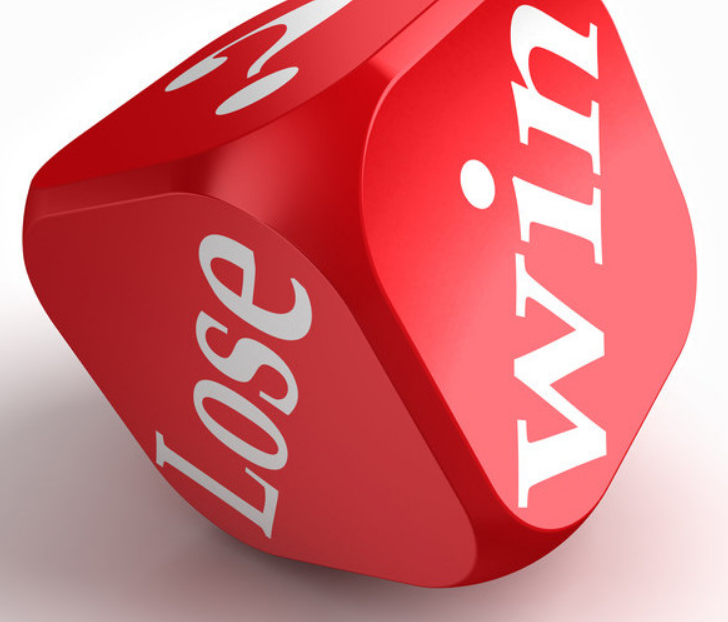investing
Why Learn to Trade Stocks?
Stock trading has numerous benefits as a viable part time occupation.
In contrast to a second job, there are no special qualifications to begin. The stock market doesn’t care about your level of success, education, ethnic origin or any personal characteristics. Complex employers, office politics or difficult employees do not play a part in trading. Additionally you have the freedom to trade from any location. If you follow a few simple rules you can run your business on your own terms.
The most important factor is to be clear about why you want to trade stocks. What do you hope to gain financially from learning to trade?
Are you looking to:
1. Create an enhanced lifestyle with supplemental income?
2. Replace a full time income with a passive income stream?
3. Become independently wealthy by creating a financial base independent of other income sources?
What would being a successful trader mean you? Imagine yourself making successful trades and gaining financially. Think about what it would feel like to have extra money in your bank account and to achieve your targets. With a clear picture of what you want and how that would feel you will be able to remain focused and motivated.
Your first task.
Your first task is to put one primary goal for your trading plan in writing. Additional goals you set can then support your primary plan.
Know Yourself
As well as learning to trade stocks it is essential that you understand yow you react under stress. Being aware of your own behavior patterns and common causes of and reactions to stress when trading will help you to master stock trading.
The reason that many people lose money in the stock market is because they lack the proper knowledge base. Independent of trading styles there is one thing common to all successful traders; the use of a tested and proven system.
In learning to trade you must be willing to let go of pre-formulated ideas and start fresh, develop new successful habits, and the discipline necessary to trade successfully over time.
Are you willing to do this?
Successful stock market trading eludes many people because they don’t have contact with an experienced, successful trader or trading system that actually works. Going it alone can be potentially expensive when learning by trial and error. Investing in a solid education and taking advantage of the insights and experience of successful trader makes a lot of sense when learning to trade successfully.
Is Day Trading For A Living Your Cup Of Tea?
If you like working with money, then maybe day trading for a living is what you should be doing. This type of trading works daytime hours only, from the moment the stock market opens at 9:30am until it closes at 4pm in the afternoon, you can do a lot of trading in that amount of time. Day trading for livings with your own money, if you loose it, then you have no one to blame but yourself. However, it may be a good way to watch your money grow too. The following is the basic definition of what day trading is all about. Maybe it is your cup of tea, maybe not, only you can decide.
What is Day Trading?
Day trading for a living is when you take a position in the markets with a view of squaring that position before the end of that day. Day trading for a living mean a trader usually trades many times a day looking for fractions of a point to a few points per trade, however, by the end of the day he or she will close out all their positions. The goal of the day is to capitalize on price movement within one trading day. Unlike investors, the day trader will hold positions for only a few seconds or minutes, and never overnight.
What day trading really means.
The meaning of day trading is actually a misunderstood term. True day trading means not holding on to your stock positions beyond the current trading day, meaning your not suppose to hold on to your stock overnight. Trading this way is really the safest way to do day trading, this way one is not exposed to the potential losses that can happen if the stock marked is closed due to news that can affect the prices of your stocks. There are many people out there today who are not very good “day traders.” Because of greed, they will hold their stock position overnight, setting themselves up for the catastrophic elimination of their capital. In day trading currency, the term “day trading” changes slightly. Because currencies can be traded 24-hours a day, there can’t’ really be any overnight trading. You can have open positions for longer than a day with active stop losses than can be activated at any time.
There are a few different types of day traders out there today, it can actually be subdivided into a number of styles.
Scalpers- This type of day trading involves the rapid and repeated buying and selling of a large amount of stocks within minutes or seconds. The goal here is to earn a small per share profit on each transaction while minimizing the risk.
Momentum Traders- This style of day trading involves identifying and trading stocks that are in a moving pattern during the day, in an attempt to buy such stocks at bottoms and sell at tops.
The advantages of day trading for a living is there are no overnight risks. Because positions are closed prior to the end of the trading day, news and events that affect the next trading day’s opening prices do not affect your portfolio. Day trading for a living takes skill, experience, and knowledge. Make sure you get educated before you decide to take that on as your main source of income.
The Profit Room
Five Forex Trading Tips You MUST Know
Jumping into Forex trading with both feet? Here are five must-know tips on Forex trading and mini Forex to help you stay afloat in the Foreign Exchange currency market.
Know your Forex trading market.
Educate yourself about the currencies that you trade. The more you know about the country whose currency you’re trading in the Forex market, the more accurately you’ll be able to predict which way the money will move.
Pick a Forex trading system – and stick with it.
Savvy Forex traders will tell you that system is everything. Forex trading by system lets you automate your trades based on history, following the traditional peaks and valleys. Set up a system and live with it to make the most of your Forex trading.
Practice makes perfect – but it’s not the real world.
Practice Forex trading accounts are great for learning how a particular trading account works – but they’re not the real world. Many experienced traders recommend starting off with a mini Forex account to minimize your losses while you get acclimated.
Keep your eye on the margin.
Margin trading is a great way to lose a lot of money quickly. Stay away from Forex margin trading until you’re sure you know what you’re doing.
The only win that counts in Forex trading is the bottom line.
In Forex trading, the bottom line is how much money you made at the end of the day. Don’t count won or lost trades – only dollars and cents.
The Profit Room
Not Limiting Your Losses
If you know the pitfalls of trading, you can easily avoid them. Small mistakes are inevitable, such as entering the wrong stock symbol or incorrectly setting a buy level. But these are forgivable, and, with luck, even profitable. What you have to avoid, however, are the mistakes due to bad judgment rather than simple errors. These are the “deadly” mistakes which ruin entire trading careers instead of just one or two trades. To avoid these pitfalls, you have to watch yourself closely and stay diligent.
Think of trading mistakes like driving a car on icy roads: if you know that driving on ice is dangerous, you can avoid traveling in a sleet storm. But if you don’t know about the dangers of ice, you might drive as if there were no threat, only realizing your mistake once you’re already off the road.
Traders often fail to limit their losses in search of a big win. Of course, the only way you can make a fortune with trading is to actually stay in the game, and it’s hard to stay in the game when you’ve already lost all of your money. The problem is that people often feel like any loss is a failure, and so they don’t incorporate a strategy for “safe” losses. They may feel like “planning” for a loss is planning to fail when, in fact, it’s planning to keep themselves in the game.
Losses are a part of our business. The key to trading success is to limit your losses. Too many traders give a trade way too much “room,” and they take big hits, which can shrink an account down by 20%, 30%, and sometimes even 40%. You have to put a system into place which will ensure that you set small losses to avoid emptying your account.
There’s a huge difference between losing big on a regular basis and losing small in a controlled trading plan. You already know that you should keep your losses small; the key is to keep them smaller that your average wins. Even if your winning percentage is only 50%, you’ll still be profiting if you set yourself up correctly. For example, if you have a weekly strategy that gets you $300 for every win but only takes $200 for every loss, a tie of a win and a loss will still get you a $100 profit for that week.
The real key is to set a weekly goal and to be sure that you set a loss limit for each trade. So let’s say your goal is $300 each week, and you want to be sure that you lose no more than $200 per trade. If your first two trades of the week were losses, then you’re down $400. But all you need is three more wins through the rest of the week to make your profit. Once you meet your goal, stop trading, otherwise, you may end up with further losses, putting you behind schedule and gouging into your account funds, which will simply set you back further.
The basic rule: always know when to exit a trade. Set a loss limit and stick to it. But also set short-term goals, and stop when you’ve reached those goals. Don’t ever gamble. Remember that looking for small gains over the long term is a much more reliable and consistent strategy which will help you avoid losing too much too quickly.
The Profit Room’s Team
Day Trading or Investing for the Long Haul?
Among those who buy and sell stocks there is an ongoing debate about whether the most profitable approach to stock market trading is short or long term investment. And the two sides rarely reach agreement, because one side is rather conservative in its approach, whereas the other has a more radical and freewheeling attitude. Day traders are usually considered the mavericks of the trading world, and they are known for taking gambler’s risks and making huge profits in short amounts of time – sometimes buying and selling the same stock several times in a single day. Those who prefer to buy and hold their stocks follow a more risk-averse path, and cite historical trends to back up their claim that their method is actually more reliable and is the real shortcut to wealth.
Most investors can enjoy the best of both worlds, by setting aside some of their money for day trades, and the balance of it for longer-term investment. Because day trading tends to be more volatile, and can result in quick profits or fast losses, most of us would be advised to put only as much of our investment capital as we can comfortably afford to lose, into this kind of trading strategy. That way, even if you encounter a worse case scenario, it will not adversely impact your overall financial situation.
There are pros and cons to both styles of investing. Those who do day trades enjoy the fact that they can get in and out of the market quickly, and make money without waiting for the results. But any kind of stock market investment strategy requires research into the companies you decide to invest in, and research can take time to do. If you are buying and selling so fast that you don’t have time to do adequate background analysis, day trading may not be a prudent approach.
Investing in companies that provide slow but steady returns is a time-tested approach to the stock market. In fact, most historical evidence supports the idea that if you buy quality stocks and hold them for long periods of time – at least five years or more – you will do very well in the stock market. For that reason, those who are young enough to have time on their side would probably be wise to buy some stocks and sock them away for retirement.
With most investments, it is usually best to diversify to minimize risk and maximize potential gains. One way to accomplish this in the stock market is to employ both strategies, and use a portion of your investment capital for short-term trades, while leaving another portion in long term investments. If one basket of investments doesn’t do well, the other probably will. And if both do well, you will enjoy twice as much success.
At The Profit Room we can help you learn how to day trade and swing trade. So whatever trading strategy decide on contact us.
Short-term vs. Long-term stock investment
There are many persons that run towards stock investment as a means to make some quick money. This is perhaps however not the best investment option for persons with short term rewards in mind. The best option when thinking of investing in stocks is if you are interested in accumulating funds over a long period of time. One such example is the investment for future needs such as a nest egg for retirement and so on.
In stock investment both short term and long term investments come with risks attached and therefore nothing is truly guaranteed in the stock market. Today could be very good and tomorrow very bad resulting in great gains or great losses as the case may be. However, in terms of long term investment, it is shown according to statistics that there are no 20 year portfolios that have lost on the stock market. The average returns have averaged about 10 percent and these accounts all have a broadly diversified portfolio of stocks.
In the short term the market is very risky. The market will go up and then go down so if you are only thinking of investing for a short period then this is not the best option. If you are nearing retirement age and now beginning to invest in stocks this is not a good option. The best option in these cases as a protection against inflation, rather than stocks, is to invest in stable investments such as bonds and other cash instruments. This offers more security than stocks in the short term.
So how long is considered short term? Many persons are under the misconception that short term means less than a year but this is in fact not so. In terms of stocks short term is considered to be five years or less and some persons will recommend more years rather than the minimum of five years. A good rule is that if you are going to need your funds in the next five years then stay away from stock investment. Another point to note is that unless you are an active trader then short term investments make no sense. If the funds being used are for retirement investment then being an active trader is also not recommended.
The average down time for some markets is a year but this has been seen to last much longer a well so though for a long term investor this downtime may seen to be a lifetime it will pass but if you are a short term investor you will lose a lot depending on the market fluctuations. Stock investment will offer many great opportunities but can be devastating for a short term investor. If you know that the funds you are investing will be required for use in a short time then choose investment options that are more secure and protected. It is true that you may get lucky and make a fortune but it is also true that the risks are high and that you can lose everything.
Greed And Fear
Greed and fear are the major players in the stock market. These two emotions are the
driving force behind almost all market participants – Institutional mangers, stockbrokers,
Investors, traders and yourself.
You might be saying to yourself that greed and fear will never get in the way of my trading,
but believe it or not they will be. It is not something to be ashamed of. It is something you
have to admit to, come face to face with, If you are to become a successful stock trader or
investor.
This is why our day trading chat room is helpful. You can see how our moderators deal with this everyday.
What do greed and fear look like in the stock market trading arena?
You have been watching a particular stock for some time now. It has set up perfectly, so you pull the trigger. You bought it at the perfect price and now it is moving higher just as you thought it would.
Now greed steps up to the plate and says to you, this is going to be a rocket ship. So you buy some more shares. Or your stock moves a few points and goes passed the price that you decided to get out. Greed tells you this baby is going higher tomorrow so you hang on.
When stocks make strong moves to the upside greed from all the cumulative market participants joins the move.
Stock prices usually fall faster then they go up, and when this happens, fear now steps up to the plate.
Lets look at the example above, where your stock went through your get out price and you held on because greed was by your side. The next morning the stock price gaps down. Their is heavy selling all morning long. Greed is telling you to hang in there the price will come back. The price keeps going down, now you get a knot in your gut, and your knuckles are turning white. Fear is now by your side, but by now it is to late, your nice profit has turned into a loss.
Everyone goes through this until they have mastered the ugly faces of greed and fear. Master this and you are well on your way to becoming a successful stock trader.
The Profit Room’s premium courses are designed to help you conquer the greed and fear that can result from trading.
Trade Safe!








